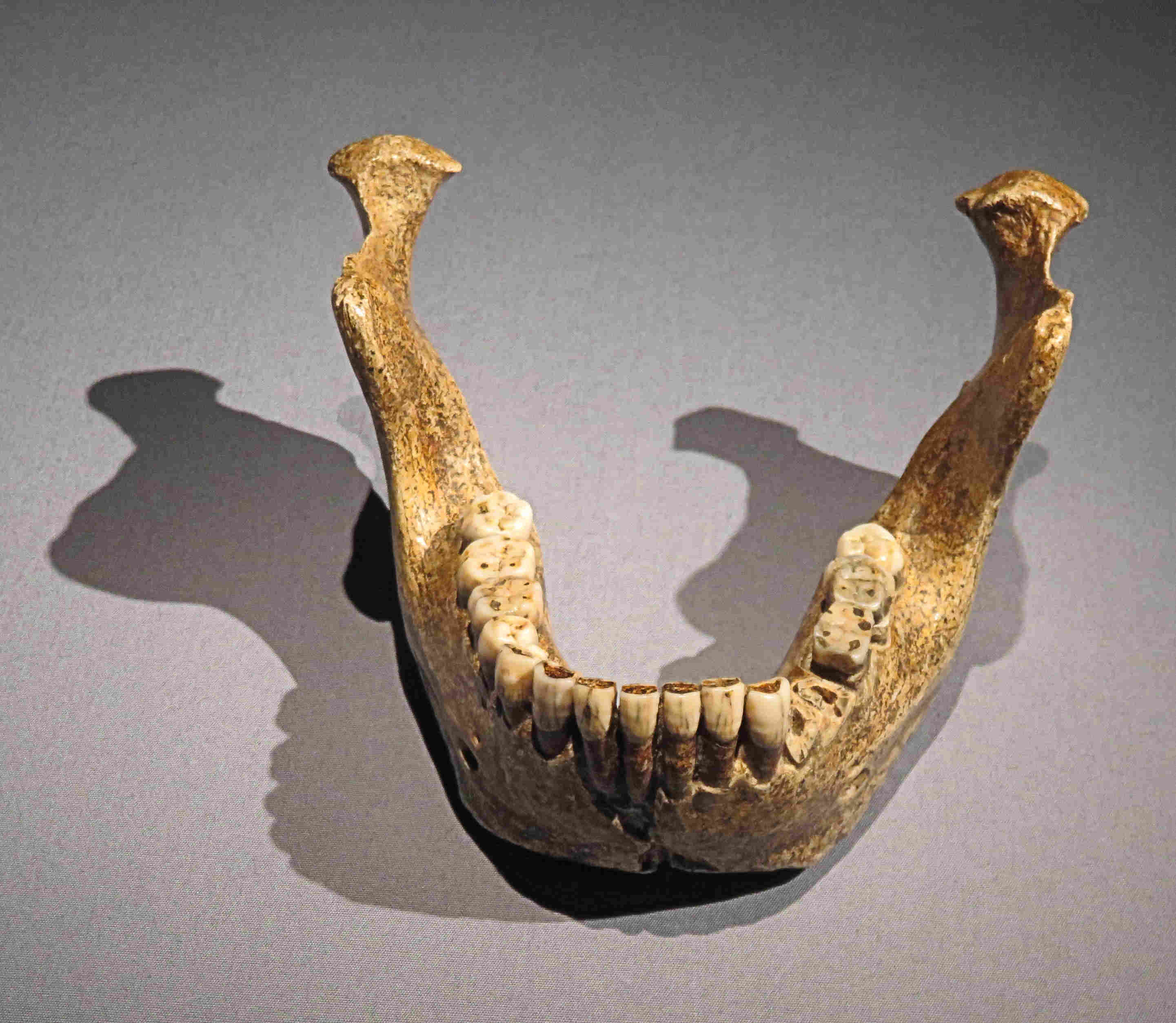… was an ancestor of the Neanderthal and lived near Heidelberg?
He is more than 600,000 years old and considered one of the ancestors of the Neanderthal man: the “Heidelberg Man.” On 21 October 1907, Daniel Hartmann hit on a very well preserved lower jaw of a prehistoric human being while digging for sand in a 24-meter-deep pit. The lucky finder must have known immediately what it was that he had on his shovel since he reportedly remarked: “Today, I found Adam.”
That Hartmann treated the find with caution was to a great extent thanks to the historian from Heidelberg Dr. Otto Schoetensack (1850-1912) who had been digging for fossils in the area since 1888. The discovery was called “Homo heidelbergensis” and became the focal point of extensive research.
Scientists have by now found out that the prehistoric man must have died between the ages of 25 to 30. It is also assumed that his death came about in close proximity to the location where he was found near a loop of the Neckar. He is presumed to have been slim, about 1.70 meters tall, had a steep forehead and small brow-ridges, a receding chin, and he walked erect. His nutrition consisted of berries and nuts, and he presumably suffered from arthrosis and parodontosis.
His lower jaw today plays a central role in the history of human evolution as the oldest fossil evidence of middle European hominids. The society “Homo heidelbergensis,” founded in 2001 by Mauer, made it their declared goal to promote scientific research of the “Heidelberg Man” and his living circumstances.
